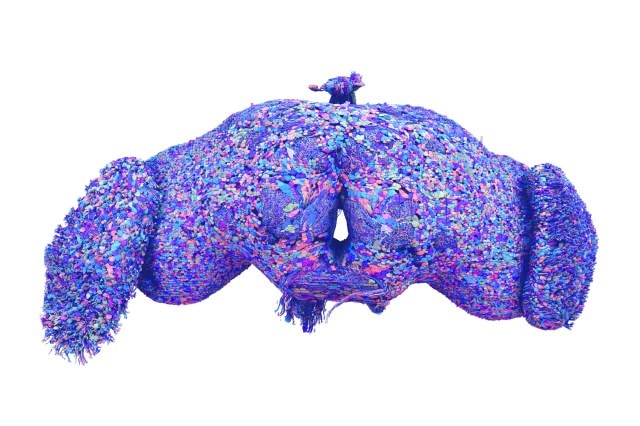Why you should care about scientists mapping the fruit fly’s brain
The mapping of the fruit fly’s brain can also give information about not just other animals but also humans. Here's how.
 The photo shows how the brain of a fruit fly is dominated by neurons that take in signals from the eyes on either side of its head and process them to perceive the fly’s surroundings. (Photo: Tyler Sloan for FlyWire, Princeton University via The New York Times)
The photo shows how the brain of a fruit fly is dominated by neurons that take in signals from the eyes on either side of its head and process them to perceive the fly’s surroundings. (Photo: Tyler Sloan for FlyWire, Princeton University via The New York Times)Scientists on Thursday (October 3) said they have successfully mapped the entire brain of an adult fruit fly, marking the first time that researchers have been able to create such a detailed survey of an adult animal. The neurological milestone is a step toward one day making a detailed map of the human brain that will help in understanding and probably treating mental health conditions such as Parkinson’s and depression.
Nine papers, describing the research in detail, were published in the journal Nature on Wednesday (October 2). Hundreds of scientists and citizen scientists worldwide contributed to the work.
Sebastian Seung, one of the co-leaders of the research and a professor at Princeton University, told Reuters, “You might be asking why we should care about the brain of a fruit fly. My simple answer is that if we can truly understand how any brain functions, it’s bound to tell us something about all brains.”
How was the adult fruit fly brain mapped?
Scientists began mapping in 2013 by dunking the brain of an adult fly in a chemical bath, hardening it into a solid block, according to a report by The New York Times. “They shaved an exquisitely thin layer off the top of the block and used a microscope to take pictures of it,” the report said.
Researchers then shaved another layer and took a new picture — in total, 7,050 sections were imaged and 21 million photos were taken to map the entire brain. The first high-resolution picture of the brain was produced more than a decade after the work kicked off.
What did the work reveal?
Scientists were able to detail more than 50 million connections between more than 139,000 neurons — brain nerve cells. They also classified the cells into 8,453 distinct types, making it the biggest catalogue of cell types in any brain, according to the NYT report.
These achievements gave numerous insights into the brains of fruit flies. Scientists analysed what different types of cells do, how the fly’s eyes process motion and colour information, and discovered a large assemblage of “hub neurons” that may speed up information flow, a report by Reuters said.
Why is this significant?
The mapping of the fruit fly’s brain can also give information about not just other animals but also humans. Although the human brain is far more complex than that of a fruit fly, the logic or “source code” at work when neurons communicate and interact with one another is similar, John Ngai, one of the co-leaders of the work, told The Washington Post.
Mala Murthy, another scientist who was involved with the research, told Reuters, “Flies are an important model system for neurosciences. Their brains solve many of the same problems we do.”
The mapping has also raised the hope that someday scientists will be able to map the entire human brain as well. That is necessary to better understand how human brains work and how mental disorders come about. Scientists also hope it can help more philosophical questions — What is love? What are dreams?



- 01
- 02
- 03
- 04
- 05



































